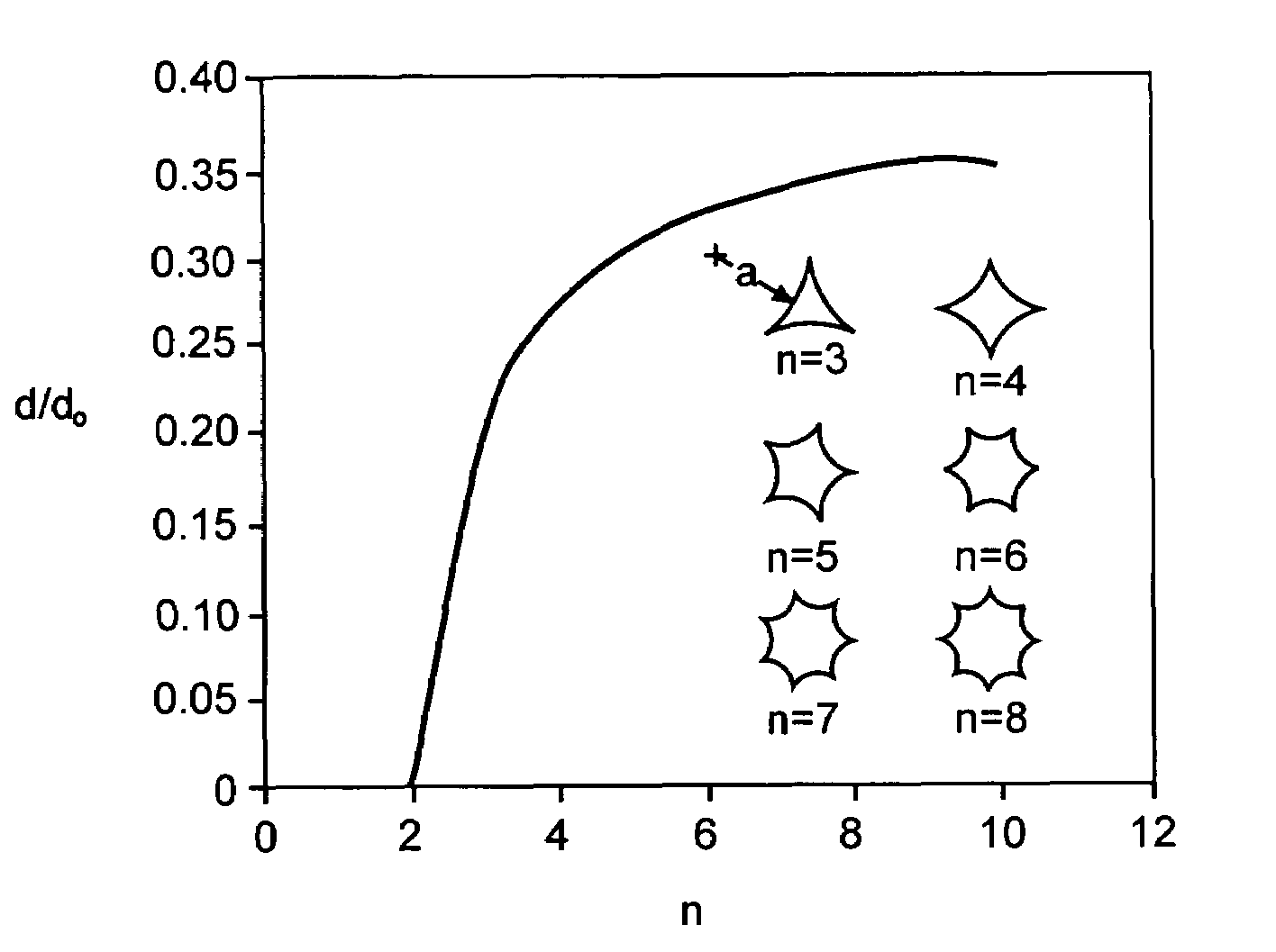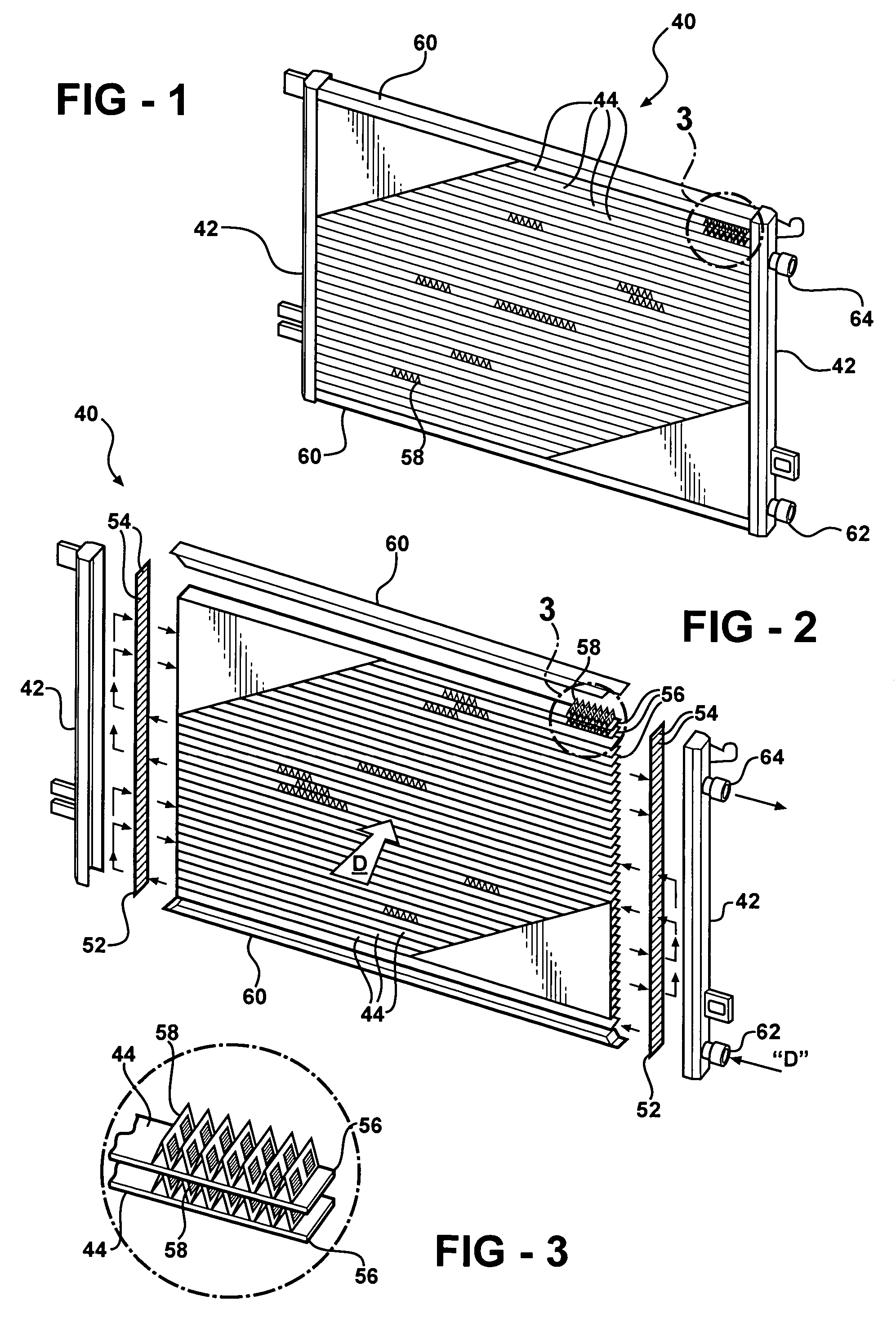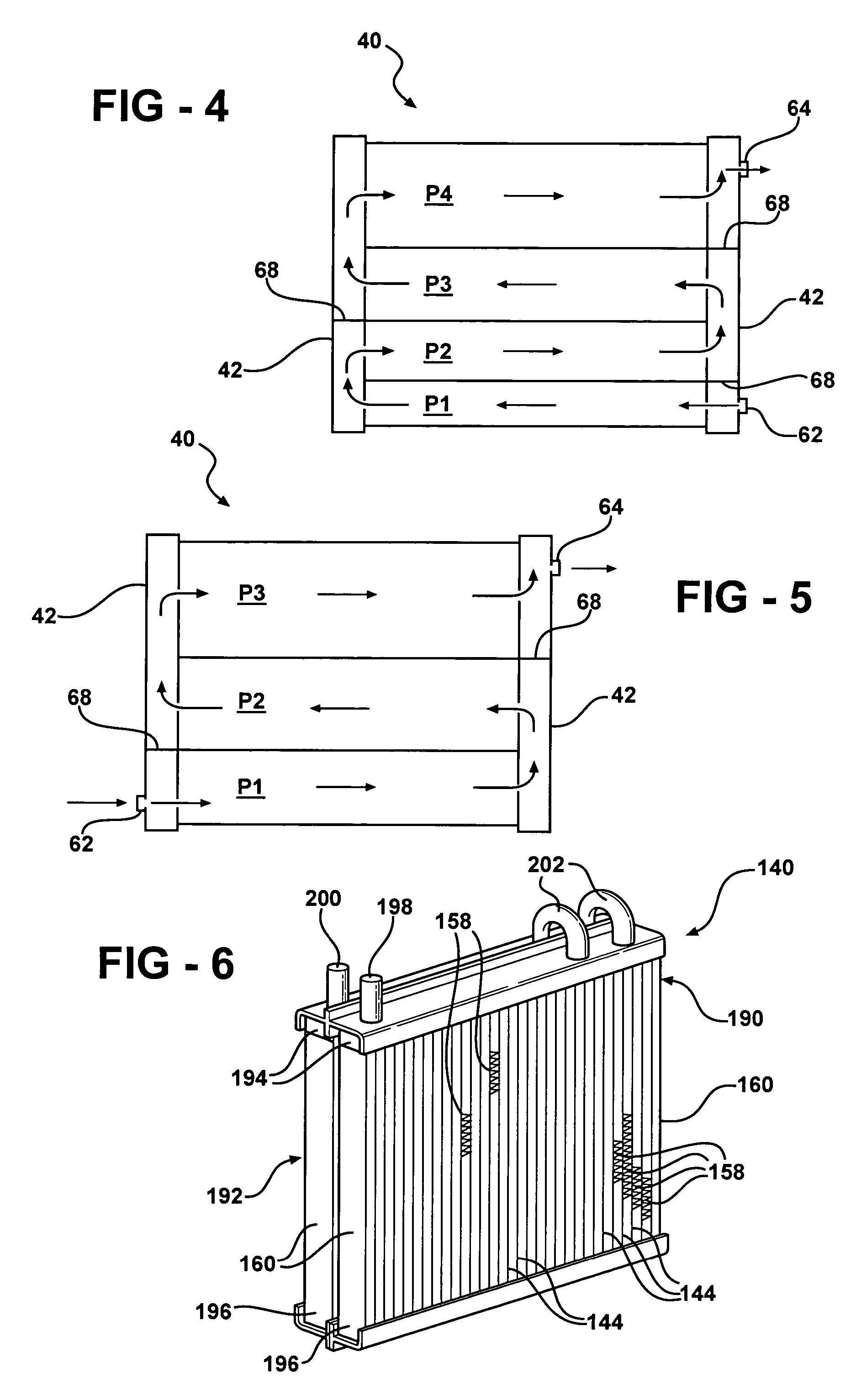Flat tube evaporator with enhanced refrigerant flow passages
a technology of evaporator and refrigerant flow, which is applied in the field of flat tube evaporator with enhanced ref, evaporator, can solve the problems of difficult fin bonding to the surface, difficult fabrication, and tubes that can be subjected to relatively low refrigerant side pressure, etc., and achieves enhanced quasi-pool boiling, increased heat transfer rate through the tube, and enhanced nucleate boiling
- Summary
- Abstract
- Description
- Claims
- Application Information
AI Technical Summary
Benefits of technology
Problems solved by technology
Method used
Image
Examples
Embodiment Construction
[0045]Referring to the Figures, wherein like numerals indicate like or corresponding parts throughout the several views, a heat exchanger is generally shown at 40 in FIGS. 1 and 2. The heat exchanger 40 is an evaporator of the type wherein an upstream to downstream fluid flow, such as airflow indicated by the arrow “D”, is directed over its external surface, which induces a transfer of thermal energy between the external fluid flow and a refrigerant circulating through interior of the heat exchanger 40.
[0046]The heat exchanger 40 has an unfolded core design and includes a pair of spaced tanks 42 comprising a plurality of flow separators 68, shown clearly in FIGS. 4 and 5, to divide the incoming refrigerant flow into a number of flow passes (vide infra). A plurality of heat exchange tubes 44, divided into groups of tubes to correspond to various flow passes, extends between the tanks 42 in fluid communication therewith. As described in greater detail with reference to FIGS. 8 and 9 b...
PUM
 Login to View More
Login to View More Abstract
Description
Claims
Application Information
 Login to View More
Login to View More - R&D
- Intellectual Property
- Life Sciences
- Materials
- Tech Scout
- Unparalleled Data Quality
- Higher Quality Content
- 60% Fewer Hallucinations
Browse by: Latest US Patents, China's latest patents, Technical Efficacy Thesaurus, Application Domain, Technology Topic, Popular Technical Reports.
© 2025 PatSnap. All rights reserved.Legal|Privacy policy|Modern Slavery Act Transparency Statement|Sitemap|About US| Contact US: help@patsnap.com



